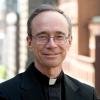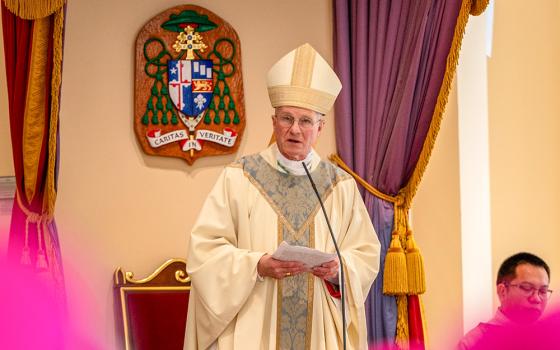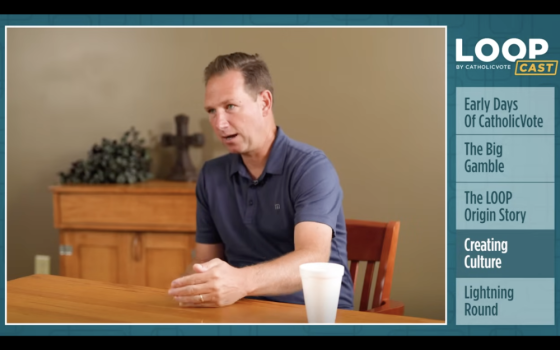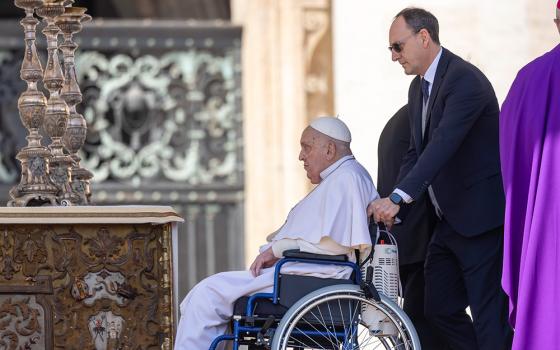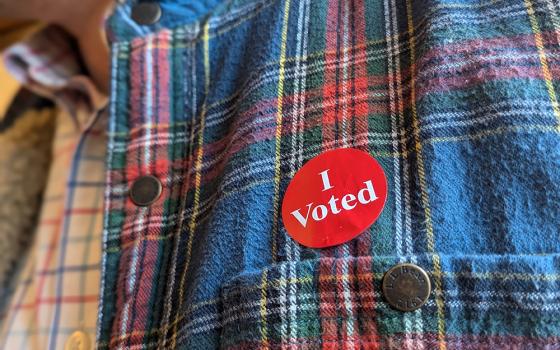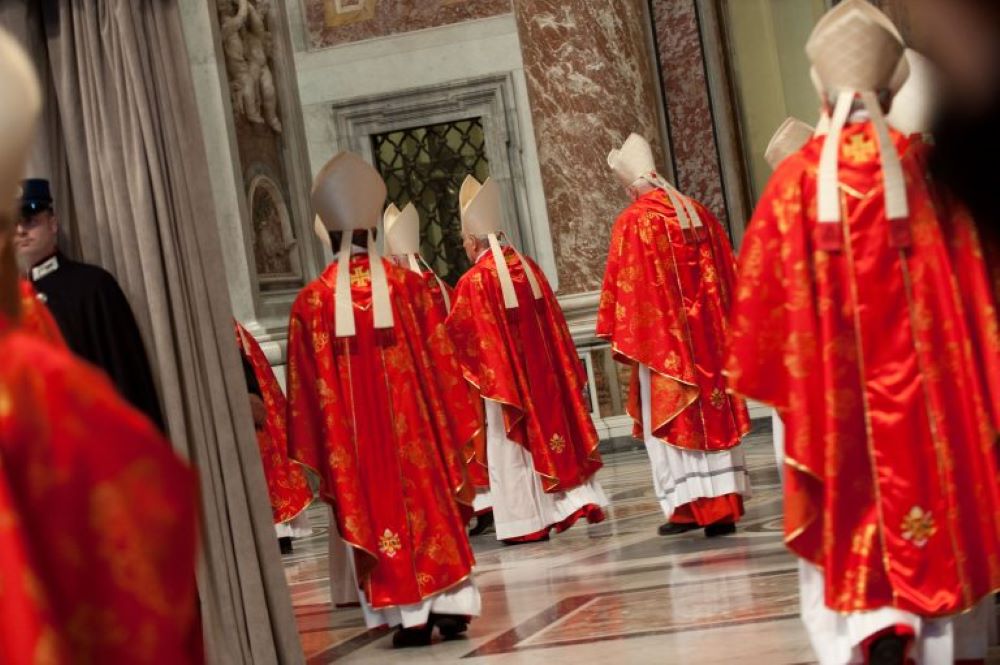
Cardinals enter the Pro Eligendo Pontiface Mass prior to the Conclave, March 12, 2013, at the Vatican. (RNS/Andrea Sabbadini)
Nothing could be more different from how America chooses a president and the Catholic Church chooses a pope.
America chooses a president every four years, while the Catholic Church chooses a pope only after his predecessor dies or resigns. Americans choose a president in a public and democratic process involving millions of voters, while the pope is chosen in a private process involving only 120 or fewer cardinals.
The campaign for president is long and loud. Campaigning for pope only lasts a few weeks after a pope has died or resigned, and campaigning is done quietly behind closed doors.
Despite all this, the Democratic National Convention this year is shaping up to be more like a conclave.
President Joe Biden's withdrawal from his candidacy for a second term makes one immediately think of Pope Benedict XVI's resignation from the papacy, which was followed by the conclave that elected Pope Francis. Both incumbents were in failing health and stepped aside for the good of the institutions they led.
Delegates to a Democratic convention are bound to vote for the candidate chosen through their state's primary or caucus. This is done through a monthslong democratic process that culminates in a sometimes raucous convention.
Cardinals, who are appointed by the pope, go into a conclave free to vote for any other male — even a non-Catholic if he is willing to be baptized and ordained a priest and bishop. A promise or even an oath to vote for a candidate is not binding.
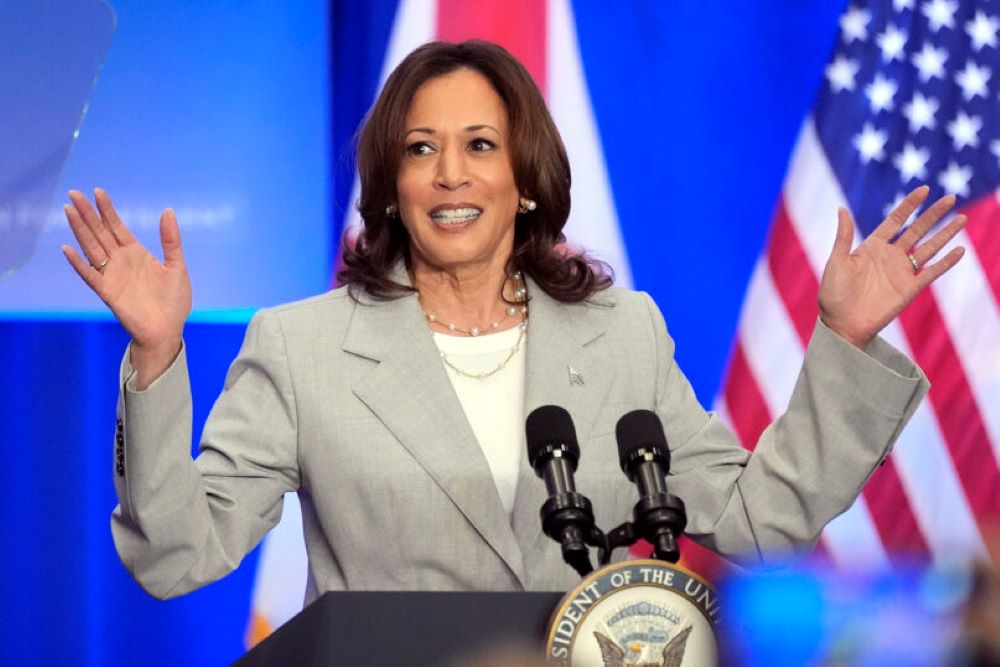
Vice President Kamala Harris speaks at an event May 1, 2024, in Jacksonville, Fla. President Joe Biden endorsed her on July 21 after he stepped aside amid widespread concerns about the viability of his candidacy. (AP/John Raoux)
With Biden withdrawing from the race, his convention delegates are free to vote their consciences, just like the cardinals. Theoretically, they may nominate any natural-born American citizen who will be 35 years of age or older on Inauguration Day.
This is the first time that delegates will have this freedom since 1968, the disastrous convention after which reforms dictated that the delegates had to follow the results of their state primaries. Prior to the reforms, party bosses and political professionals played a much greater role in choosing presidential candidates than they do today. Some political scientists and historians argue that we got better candidates and presidents under the old system.
This year Democratic leaders have done their best to determine the new candidate to replace Biden without seeming to act like party bosses. Biden, followed by a flood of other Democratic leaders, endorsed Vice President Kamala Harris to replace him at the top of the ticket.
Not that the convention delegates won't continue to carefully study public opinion. To a lesser degree, this happens at a conclave: Catholic cardinals claim to be unconcerned about public opinion, but in truth, they want to elect a pope who will be popular, especially in the country from which they come.
But there are important differences between a convention and a conclave.
To get elected pope takes a two-thirds vote of the cardinals, a rule the Democrats hewed to until 1936. But after too many deadlocked conventions — in 1926, it took more than a dozen votes to choose the candidate — the convention allowed candidates to win with a simple majority.
Similarly, some conclaves used to go on for months, a few for more than a year. Pope John Paul II tried to solve the problem by allowing for a majority vote after 30 ballots, but Benedict changed that to a runoff between the top two candidates. I have argued that the old two-thirds rule for conclaves is better, as it ensures a consensus candidate rather than one supported by a simple majority.
Advertisement
The most obvious difference between a conclave and a convention is the presence of the media at a convention and the total secrecy surrounding a conclave. Conventions are televised. People know how each convention delegation votes. Conclaves take place behind locked doors, and not even the cardinals know how the other cardinals vote since the voting takes place by secret ballot.
Some would also like to reform the process for electing popes. For example, he could be elected by all the bishops, rather than just by the College of Cardinals. Air travel and contemporary technology could make this change possible.
Or the pope could be elected by a synod of bishops who are selected by their national episcopal conferences. This would be like the American caucus system.
Don't hold your breath, neither reform is likely to happen soon.
When the founders gathered in Philadelphia to write the U.S. Constitution, they were not anticipating party conventions. But they nonetheless created an institution not unlike the College of Cardinals: the Electoral College, whose votes actually determine the winning candidate.
Originally, these electors, even if pledged to a candidate, were free to vote for whomever they wanted, and a few did. The U.S. Supreme Court ruled in 2019 that they must follow their state's voted preference. However, they could provide a failsafe. If a candidate dies after winning the November election, states could release their electors to vote for someone who was not on the ballot.
The College of Cardinals, it should be noted, has no such backstop. If their chosen pope dies, it's back to the conclave to start from scratch.
